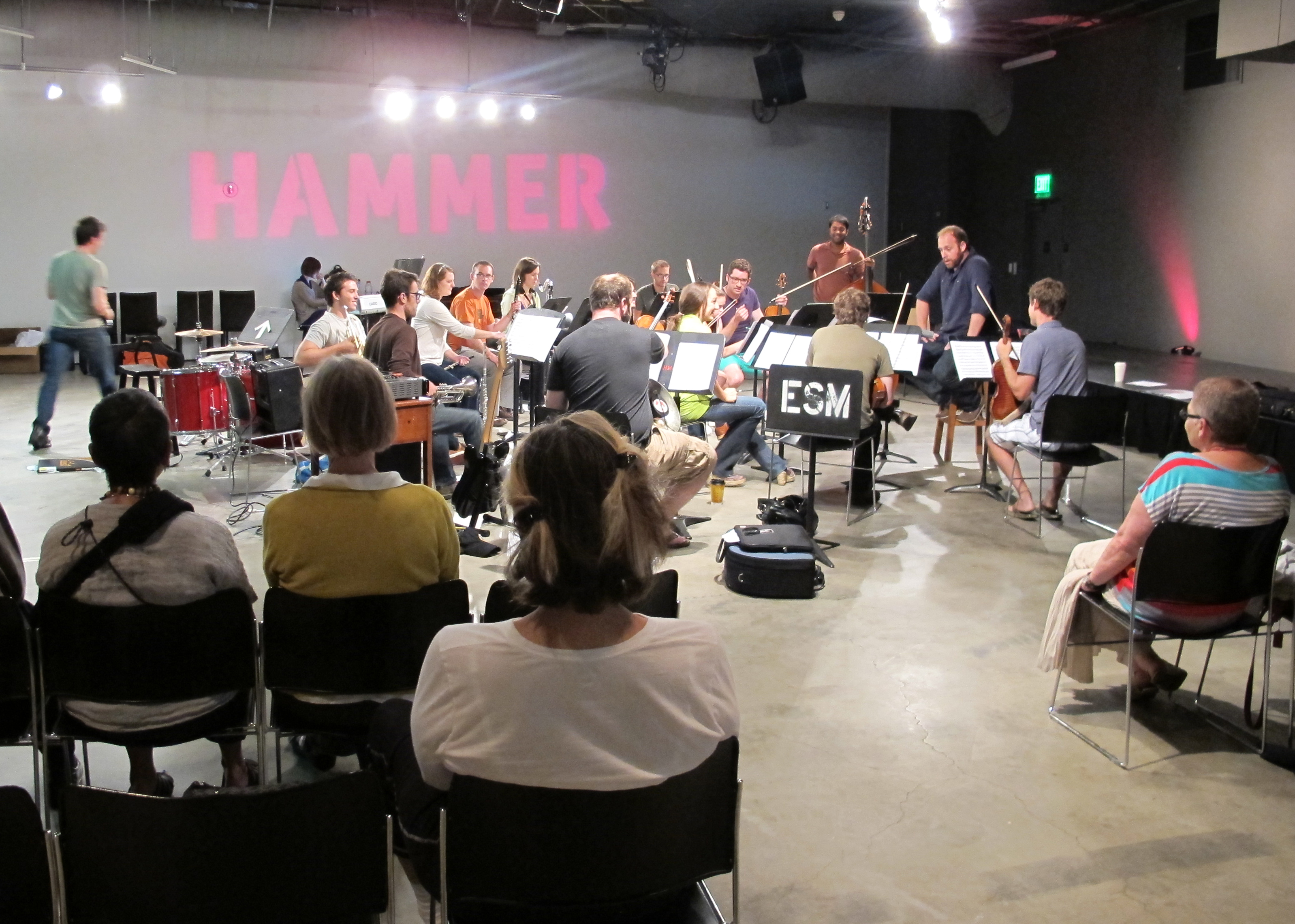lboodahians@media.ucla.edu
Wilco and Schubert isn’t a combination that comes to mind when considering an orchestral performance, but for the experimental and classical music ensemble wild Up, this is nothing out of the ordinary.
Founded by conductor Chris Rountree, wild Up is essentially one of the Hammer Museum’s most recent installations. Currently in residence at the museum, the setup is something Rountree describes as “art happening,” where developments are taking place in a forum open to the public.
“The Hammer has given us the incubation space we need to work out where we are going,” Rountree said.
The group seeks to reinterpret music from being simply instruments playing a song to people creating a thought-provoking experience.
Rountree, who originally considered a career in music education before being inspired by the Berlin Philharmonic to pursue conducting, said, “Our goal is to change (music) from being simply beautiful and perfect to also being unbelievably compelling.”
In many ways, wild Up is breaking the mold of a typical orchestra ““ particularly in its focus on audience inclusion.
“Generally, a music ensemble isn’t supposed to consider the audience,” said Rountree. “(But) I consider myself part of the audience, and I am constantly thinking about how the performance arc will feel from piece to piece and how that will make the audience feel.”
Elizabeth Cline, curatorial associate of public engagement at the Hammer, explained that audience inclusion was what originally drew her to the group.
“I was struck by how … (the performance was) very informal and broke the traditional concert format of the orchestra playing to the audience. It was really interactive,” said Cline.
Cline said that often during performances, wild Up would tell anecdotes about how pieces they played were chosen and developed.
This behind-the-scenes look into how the group functions is something that Rountree strives for and is the basis of the concept of open rehearsals wild Up holds at the Hammer, where viewers can observe a performance as they would view a painting.
“Putting a rehearsal in the context of a museum was an interesting idea, because people could engage with it as an art object and their experience would be totally different,” said Rountree.
Cline expressed that this was one of her goals in curating the ensemble for the Hammer.
“Having an orchestra in residence allows for exposure to an art audience who are more willing to be lead down a path of experimentation and discovery,” said Cline.
The rehearsals allow for insight into the composition of the music wild Up performs and the dialogue between its members in the planning stages that lead up to the performance, when they pitch ideas and flesh out the details of a concert.
In keeping with pushing boundaries, wild Up doesn’t alter itself to fit music, it redesigns music to accommodate its artists. Compositions are chosen because the group wants to perform them, not because they are the only pieces designed for an ensemble of their instruments, which are greatly varied.
“This isn’t typical of an ensemble,” said Richard Valitutto, the group’s pianist, of the process of arranging music for the ensemble’s needs. “Usually the question is: What piece exists that fits our instruments so we can play it?”
The group chooses to perform a combination of indie rock, classical and contemporary compositions and encapsulates them in one performance under a greater concert theme. However, Rountree said that attempting to play several genres of music creates a great challenge for the musicians.
“It is a difficult balance to try and do all types of styles and make it all work even if it isn’t our strong suit,” Rountree said. “But with (a range of) talent, when someone is very challenged by something, there is an access point to (push and) achieve success.”
Wild Up is very much Rountree’s visionary baby, but it is clear the child has been raised by a village. Valitutto explained that this idea of a community collaboration, where all members actively contribute ideas as opposed to being instructed by the director, distinguishes the ensemble from others and gives it more of a band-like feel.
“You have a group of people so involved in the process of creating music that the music becomes stamped with each of the performers’ individual personalities, which I think translates to the audience,” said Valitutto.
Wild Up has been a developmental process and has come into its goals through its growth, but ultimately, it has one purpose.
“I want to have the audience leaving the show, feeling as if they don’t totally know what it means,” said Rountree. “They have questions and they are eagerly trying to answer them.”
